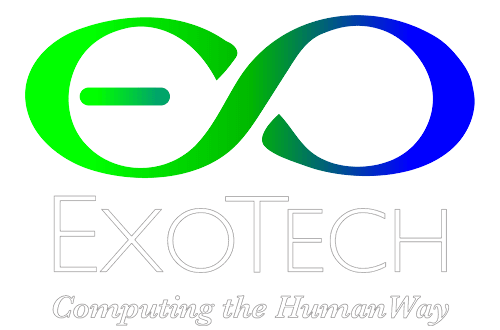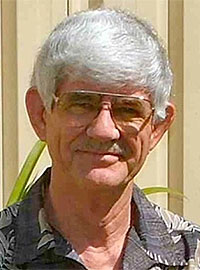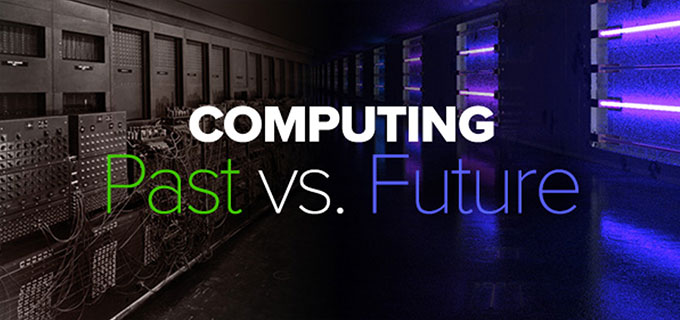
Seriously – How Small Is Small?
I want to tell you a little story. In the early 1950s, the British government thought they would run out of coal in 20 years or so. Coal was the main source of energy in Britain at the time. Nearly all of their electricity was produced in coal-fired power stations.
We all know now that they later found all that oil under the North Sea, which totally replaced the need for coal. But, in the early 50s, they did not know that, and they commissioned the building of some 20 atomic power stations as a start to replacing all those coal-fired ones.
I tell you this, because, although I was born and educated in Australia, my first job was in the UK as a young Electrical Engineer. I was working for the General Electric Company (the British General Electric Company, that is) and most of the time I was working at the Hunterston Atomic Power station in Scotland, which was the first of the 20-odd stations that had been commissioned. This was in 1962 and 1963.

Now, the title of this talk is about small stuff, and I will get to that – I promise. But for now, stick with me. So, to get you oriented, here is a schematic of the Hunterston Atomic Power station.
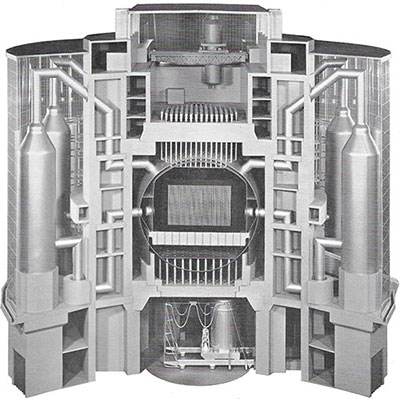
The circular part in the middle is the reactor sphere where the atomic fuel goes and the machine under that, at ground level, is the Charge Machine. This is the one I was working on. It’s job was to replace the fuel rods in the reactor by accessing them through the tubes you can see below the sphere.
So, we are talking about a machine that needs to go back and forth and left to right under the reactor sphere to get to the different doors, and then to connect through one of the doors, insert mechanical arms into the reactor and manipulate the fuel rods. So, it is an entirely mechanical process – you know, levers and pulleys and joints and so on. And also realize that the reactor runs at 200 lbs per square inch of pressure and the internal temperature of the circulating gas, which is radioactive, is around 400 degrees. So, it’s pretty scary stuff.
Now, remember, this was 1962-63, but the equipment was actually designed in 1955 and there was not a transistor in site. Transistors were the first solid-state electronic switches. Prior to that, class tubes, called valves, were used. But each one (transistor or valve) was simply an electronic switch, that could be set to on, or off.
But we had no transistors at all in our control circuitry. We had what were called post office relays (at least that’s what the Brits called them, so we Aussies did, too). Here is what a post office relay looks like:
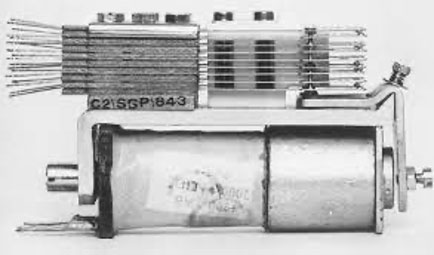
A bit primitive, but it worked. This bottom part is an electromagnet. If you turn on the power to these two connectors here (bottom left), the magnet goes on and it pulls the little metal flap here, which, in turn, operates these little pairs of electrical contacts up here – switching them either on or off, depending on the way they were set. So, by turning the power on and off on the magnet, you could operate up to 6 electrical contacts. And that’s how we were controlling all those rods and levers that were manipulating the atomic fuel rods.
So, why am I telling all this? Well, it’s a size comparison thing. Those post office relays we were dealing with had 6 contacts. We had to have a lot of them to control all the things we had to do with the atomic fuel rods we were manipulating, and we did have a lot. Imagine a room about 20 feet long, with cabinets full of these post office relays on both sides of the room. Each cabinet held about 80 relays and there were about 16 cabinets. That’s 1,200-odd relays, each with 6 contacts, so that 7,200 contacts (or switches) that we had wired in.
What is 7,200 switches in today’s references? It’s about 500 bytes of data. You’ve heard of bytes, right? Well, in a text document one byte is basically a character, like an “A” or a “1” on the page. Although today we usually talk about millions of bytes, or even billions of them; like I have 500 gigabytes of storage on my phone here. Yes, a little phone actually has 500 thousand, million, bytes of internal storge, just for my pictures and apps. That’s a thousand million (or a billion) times more data storage than the entire room full of control circuitry we had 60 years ago –circuitry that had complete control of a nuclear reactor’s fuel elements.
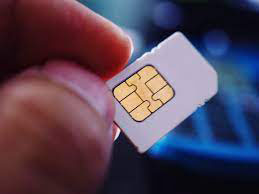
See this? This is where it all ended up today. It’s a SIM card. It’s what goes in your phone to drive it and to supply all the storage we are just talking about here. That’s where the billions of bytes of data are stored.
So, what’s the point of all this? Technology has obviously moved on at a tremendous rate. But software got lost early in the game, because it was controlled by people who did not understand what was happening.
They did not realise it at the time, but the development of software had taken a path that was actually, eventually, going to be a dead end. And along the way, attempts to head off that dead end have generated so much additional computer code that today’s software is absolutely huge in size. But most of it is not actually functional code – it’s patch-up, and fix-up, and workaround code that has been added over the years to try (unsuccessfully) to handle the underlying dead end that is headed its way. Have you noticed the number of software updates you get on your computer lately?
I’m sure you have, but the other thing that so many people have noticed over the years is that operating a computer has become so complex. Today, 50 percent or more, of the world’s population does not even use computers, because they are too complicated for them. And, of the people who do use computers, 95% of them are only using 15% or so of the software’s full potential, because to use it all is just far too complex.
ExoTech has changed all that. And because we are creating a system that is unlimited in its potential to grow and expand, with no dead ends in sight, or even possible, our technical experts are creating all this with a fraction of the code that the conventional systems use. The Microsoft operating system has something like 5 million lines of software code. But the ExoTech system is already performing 70% of the same functions now, but so far with only 45,000 lines of code.
So, seriously, how small is small? When you take away all the unnecessary garbage and are left with the core function of ExoTech, that’s what small is!
And we are doing that with a fully language-controlled computer that will work for them in exactly the same relationship as they would have with another human.
Can you imagine what that is going to do for all those people who don’t use computers at all, or for all those people who are only using 5% of the available power and functions? Instead of having to look at some cryptic menu list to find out how to use their system, they simply tell it what is needed, using common, everyday language. And the ExoBrain will understand and do it for them. Wow!
And that is going to change computing – forever.
